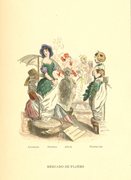
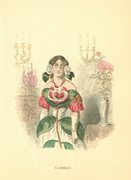
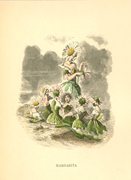
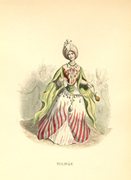
Entertaining botanical drawings by a French artist and caricaturist, not only personified flowers but also illustrated Grandville’s state of mind in 1847, following the death of three of his children. Grandville’s illustrations for Fleurs Animées (Animated Flowers), usually referred to as ‘Flower Ladies’, was universally the most popular of all his wonderfully imaginative illustrations.
Jean-Ignace-Isidore Gérard (1803-1847) began drawing at an early age and was taught by his father, painter of miniatures, Jean-Baptiste Gérard (1766-1854). Jean-Ignace-Isidore adopted his father’s actor parents’ stage-name of Grandville, and personal name of Jean-Jacques, after moving from his birthplace in Nancy to Paris in 1825 for further training by his father’s friend, lithographer and miniaturist Mansion (Léon-André Larue) (1785-c1840).
Soon after he joined Mansion’s studio Jean-Jacques’s skill was recognized when he devised a set of 52 playing cards based on one of France’s most celebrated fortune-tellers, Mademoiselle Lenormand, known as Sibylle des Salons... and published under Mansion’s name.
Grandville enjoyed doing satirical illustrations of politicians and life in Paris, and became a popular contributor to Le Silhouette, L’Artiste, La Caricature, Le Charivari, and other less well-known publications, particularly during 1827 in conjunction with his friend, lithographer, caricaturist and journalist Charles Philippon (1806-1862). In 1830 Philippon’s son and business partner Gabriel Aubert set up La Maison Aubert publishing house (later Aubert et Cie). Philippon became editor and designer of the new newspaper La Silhouette and published the first political cartoon in 1830. After the July revolution he also began publishing his own small illustrated journal of political satire, La Caricature. Philippon, however, was soon imprisoned for his magazine’s blatant criticism of the government, and La Caricature was closed later that year after the French government banned all political caricature.
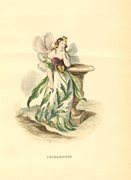
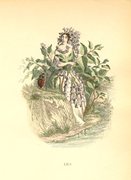
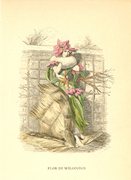
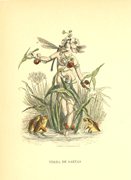
In 1828-1829 Grandville had established his fame when Les Métamorphoses du Jour (Metamorphoses of the Day) was published in Paris and Brussels, with seventy-three Joseph Langlumé lithographs of Grandville’s humorous caricatures skilfully portraying people of all ages and personalities - supporting heads of animals and birds. Métamorphoses was re-issued in 1830 by La Maison Aubert and was published with hand-coloured engravings in 1854 by Gustave Harvard, and in 1869 by Garnier.
To avoid censorship laws Charles Philippon began an illustrated newspaper, Le Charivari, with text and caricatures focusing on everyday life – once again with cartoons contributed by Jean-Jacques Grandville. It was published continuously from 1832 until 1937 – daily until 1926 and then weekly – and was the inspiration for the English Punch, or the London Charivari, which was published continuously in London from 1841 until 1992. (Three of the earliest editions of Punch, or the London Charivari are available from the Antiquarian Books section of this Antique Print Club website.)
Grandville had enjoyed drawing political caricatures. After the cessation of publication of La Caricature he turned his attention to book illustration – including the fables of La Fontaine, Don Quixote, Gulliver’s Travels and Robinson Crusoe; and issued collections of his lithographs and other illustrations. His final work, Les Fleurs Animées, was published in a number of countries over many years. His earliest drawings of Flower Ladies were clearly defined in engravings highlighted with gum arabic by Geoffroy and published in Paris in 1847 by Gabriel de Gonet.
Flowers are imaginatively clothed in the leaves and petals of each flower or shrub, exquisitely embodying the plant’s characteristic appearance or personality, herbal use, or other attribute, in a scene that sometimes incorporates respectful animals, fish, lizards, beetles and other insects. Other flower ladies contend with strangling vines, avaricious insects, leering or courting beetles or animals, and menacing gardening equipment or men.
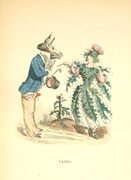
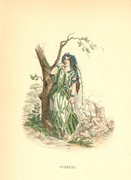
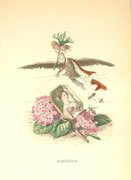
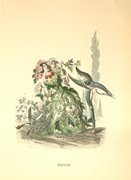
Grandville’s Metamorphoses might have created his reputation as an artist of distinctive talent and imagination, but Animated Flowers has brought him immortality, with their delicate elegance and gentle humour – even though some of his flower personifications seem slightly macabre.
There is a wonderful selection of Grandville's Flower Ladies available from this website.